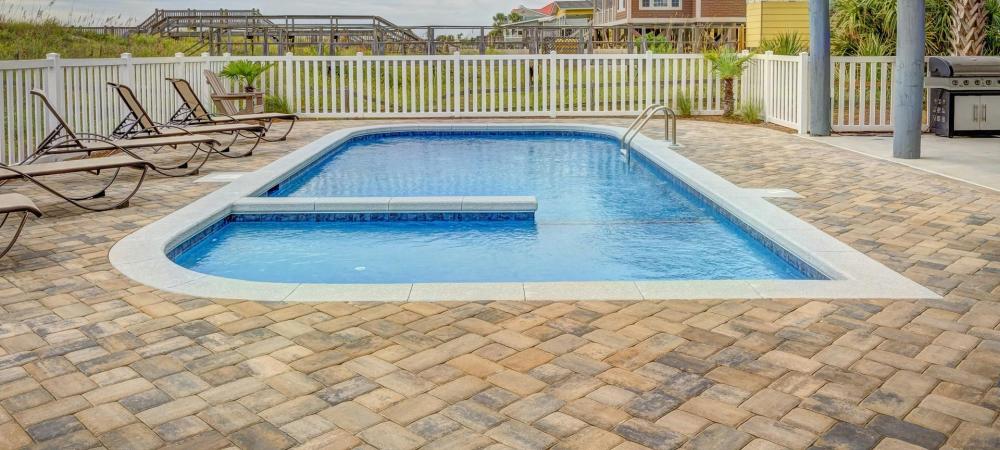
Beyond Aesthetics: Upgrading Your Pool for Enhanced Functionality
Upgrading your pool goes beyond just improving its looks. It's about enhancing functionality, safety, and enjoyment for years to come. Modern pool upgrades can significantly improve energy efficiency, reduce maintenance, and create a more comfortable swimming experience. From automated cleaning systems to advanced filtration and heating options, there are numerous ways to transform your pool into a high-performing aquatic oasis.
What is Pool Functionality Upgrading?
Pool functionality upgrading involves implementing improvements that enhance the performance, efficiency, and usability of your swimming pool. This process goes beyond cosmetic changes, focusing on elements that make pool ownership easier, more cost-effective, and more enjoyable. According to the Pool & Hot Tub Alliance, over 10.4 million residential swimming pools exist in the United States, with many homeowners seeking ways to modernize their existing pools.
Key Benefits of Upgrading Pool Functionality
Enhancing your pool's functionality can transform your backyard experience. Here are the primary advantages:
- Improved Energy Efficiency - Modern pool equipment can significantly reduce energy consumption. Variable-speed pumps, for instance, can cut energy use by up to 90% compared to single-speed pumps, leading to substantial savings on utility bills.
- Reduced Maintenance Time and Costs - Automated cleaning systems and advanced filtration can drastically reduce the time and effort required for pool maintenance. This means more time enjoying your pool and less time cleaning it.
- Enhanced Safety Features - Upgrades like anti-entrapment drain covers, pool alarms, and improved lighting not only meet current safety standards but also provide peace of mind for families with children and pets.
- Increased Property Value - A well-maintained, functionally upgraded pool can be a significant selling point, potentially increasing your home's value by up to 7%, according to the National Association of Realtors.
Types of Pool Functionality Upgrades
Filtration and Sanitation Systems
- Description: Advanced filtration and sanitation systems that improve water quality and reduce chemical usage.
- Best for: Pools with high usage or those in areas with water quality concerns.
- Pros and cons: Cleaner, healthier water with less maintenance, but may have higher upfront costs.
Energy-Efficient Equipment
- Description: High-efficiency pumps, heaters, and lighting that reduce energy consumption.
- Best for: Homeowners looking to reduce operating costs and environmental impact.
- Pros and cons: Significant long-term savings on energy bills, but may require a larger initial investment.
How to Upgrade Your Pool's Functionality
Follow these steps to enhance your pool's performance:
- Assess your current pool system - Evaluate your existing equipment's age, efficiency, and performance to identify areas for improvement.
- Research modern pool technologies - Explore options like variable-speed pumps, salt chlorinators, and LED lighting to understand their benefits and costs.
- Consult with a pool professional - Work with a certified pool technician to develop a customized upgrade plan that fits your needs and budget.
- Prioritize upgrades - Start with improvements that offer the most significant impact on efficiency and enjoyment, such as upgrading to a variable-speed pump or installing an automated cleaning system.
- Implement changes gradually - Consider phasing upgrades over time to manage costs and minimize disruption to pool use.
Climate-Specific Considerations
Different climates require unique approaches to pool functionality:
- Warm climates: Focus on efficient cooling systems and robust sanitization to combat algae growth in higher temperatures.
- Cold climates: Invest in energy-efficient heating solutions and consider adding a pool cover to retain heat and reduce evaporation.
- Coastal areas: Choose salt-resistant equipment and materials to withstand the corrosive effects of salt air.
Common Mistakes to Avoid
Steer clear of these pitfalls when upgrading your pool:
- Overlooking energy efficiency: Failing to upgrade to energy-efficient equipment can result in missed opportunities for long-term savings.
- Neglecting water quality: Focusing solely on aesthetics without addressing filtration and sanitation can lead to ongoing water quality issues.
- Ignoring automation potential: Not considering automated systems for cleaning, chemical balance, and temperature control can result in unnecessary manual maintenance.
Frequently Asked Questions
How much can I save by upgrading to energy-efficient pool equipment?
Upgrading to energy-efficient equipment like variable-speed pumps can save up to 90% on pump-related energy costs. For an average pool, this could translate to annual savings of $300 to $800 on electricity bills.
Are salt water systems better than traditional chlorine pools?
Salt water systems can provide softer water and reduce eye and skin irritation. They also require less maintenance and chemical handling, but may have higher upfront costs and can be more corrosive to certain pool materials.
How often should I upgrade my pool equipment?
Most pool equipment has a lifespan of 7-10 years. However, technological advancements may make it cost-effective to upgrade sooner, especially if you're seeing increased energy bills or maintenance issues.
Professional Pool Services in Your Area
For expert guidance on upgrading your pool's functionality, consider reaching out to the professionals at Progressive Pool Repair and Leak Specialists. Our team can provide personalized recommendations based on your specific pool setup, usage patterns, and local climate conditions. We're here to help you make informed decisions that will enhance your pool experience for years to come. Last updated: 01/01/2026
